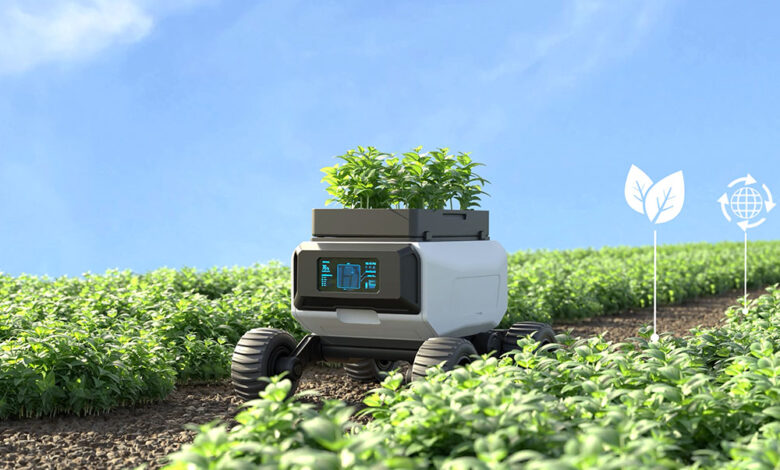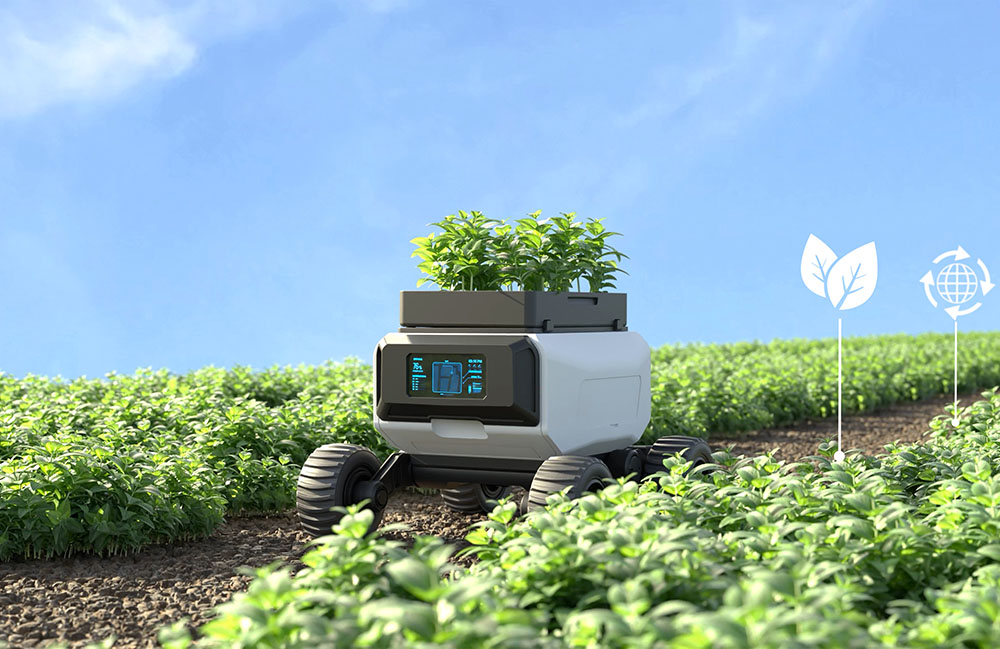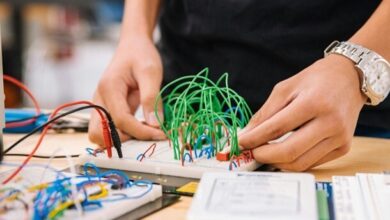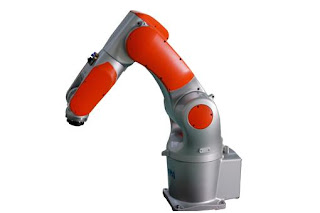How automation and farm robots are transforming agriculture


Source: EOS Data Analytics
Agriculture is becoming the most high-tech industry today. All the top-notch technologies are finding a place in the way we produce, harvest, and distribute our crops. And in all cases, farm automation and robots are not an affordable luxury, but a necessary minimum due to tackling the rising global food demand.
Agricultural robots can mitigate labor shortages by automating tasks like planting, harvesting, and weeding, while also supporting sustainable practices. Combined with satellite imagery tools for data-driven farming, these innovations can make precision agriculture more efficient, resilient, and environmentally responsible.
According to the United Nations report, by 2050, the world will need 70% more food to feed nearly 9.7 billion people. Considering this demand, farm robots and remote sensing are the cornerstone of the proper work of the supply chain.
Smart machines arise for the farm
Farm robots are no longer experimental concepts — they are actively transforming modern agriculture. Smart farming began taking shape in the late 1990s, when tractors first started using GPS to map fields and guide cropping plans.
At the time, the technology was still rough around the edges. Weak signals and a limited number of satellites often caused tractors to lose connectivity whenever a tree or building was in the way. In some cases, it could take up to 15 minutes to reconnect, making early systems frustrating to use.
Fast forward to today, and GPS-guided machinery has become far more advanced. Auto-steering equipment can move with centimeter-level accuracy, while smart sensors monitor seed placement, spraying rates, and soil conditions in real time.
Farms now connect devices into networks that gather and compare data across entire operations. Importantly, this shift doesn’t happen all at once. Some farmers begin with a few connected tools, while others embraced full-scale automation and fleet management.
This revolution is possible due to advanced software, such as satellite-based sensors and artificial intelligence. They enable tasks that were considered impossible without human labor decades ago. Growers use these robots and AI tools for:
- Harvesting yields with care, ensuring it stays undamaged
- Targeting and removing weeds with AI, removing the need for using chemicals
- Planting seeds precisely, with the same depth and spacing to guarantee stronger crops
- Analyzing and measuring nutrients in soil to guarantee the right balance for growth
As global agriculture faces a myriad of challenges like an aging workforce and climate change, such technologies can help address these challenges.
How are robots used in precision agriculture?
Robotics is vital for precision agricultural operations. With AI-driven analytics, field sensors, and satellite imagery on board, robots can identify precisely where to water, fertilize, or treat crops.
As a result, inputs are spread only where it is necessary, reducing waste, lowering costs, and limiting environmental damage. That’s why robots need to be involved in nearly every stage of food production, helping farmers save time, labor, and resources, as well as adapt to changing soil, light, or weather conditions. This is how this revolutionary machinery is applied:
- Weed control: Robots can be trained with machine learning to identify and remove weeds on the root level without disturbing crops. Unlike traditional tilling, which accelerates soil erosion and releases stored carbon, robotic weeders cut herbicide use while improving yields.
- Precision spraying: Equipped with computer vision, spraying robots can apply herbicides or pesticides only where needed. This reduces chemical waste and limits resistance in pests and weeds.
- Crop monitoring and data collection: Drones generate high-resolution maps, monitor crop health, and support soil analysis. Using satellite imagery alongside drone insights, farmers can track field conditions across thousands of acres in a single day.
- Fruit harvesting: Robots with advanced gripping systems can gently pick delicate crops, reducing food waste linked to labor shortages.
- Robotic greenhouses: Fully automated greenhouses use 90-95% less water and no pesticides, while cloud-connected robots can manage planting and harvesting.
- Livestock management: Feeding and milking robots personalize nutrition and operate around the clock, boosting animal welfare and productivity.
Farm robots make an economic impact
Robotics and automation are not cheap, for sure. But even with massive investments, automated tools are vital for long-term financial advantages. Large farms can see the fastest return on investment (ROI) because they operate at scale:
- Repetitive and time-consuming regular tasks cost less — expenses are reduced by 20% to 30%
- Precise planting, irrigation, and crop care guarantee higher yields up to 10% to 30%
- Reduced waste by applying inputs only where needed, saving 15% to 25% of fertilizers, water, and pesticides
- Environmental pressures and labor shortages are reduced or eliminated
- Planting and harvesting cycles are shortened due to the full-time work of machinery
- Human factors are excluded, and precision systems make up to 70% fewer mistakes, ensuring consistent output
Due to all these benefits, the usage of robotics in global agriculture is rising, according to Verified Market Research. For instance, in 2019, this sector was valued at $3.43 billion, and specialists predict its rise to $36.86 billion by 2027 with a compound annual growth rate (CAGR) of 34.5%.
Automation can support sustainability
Tailored automated solutions are the cornerstone of sustainable farming. Even considering high capital costs for initial deployment and maintenance of robots and lack of digital access in rural populations, robotics can improve profitability, especially in the long term.
Automated systems can be adjusted and programmed, adapting to various crops, soils, and climate changes. Moreover, AI is the new oil.
Algorithms are becoming better day by day, reducing fertilizer and chemical use, protecting soil health and biodiversity. The goal is to create harmony between agricultural production and nature, ensuring food security while safeguarding ecosystems.
 About the Author
About the Author
Vasyl Cherlinka is a doctor of biosciences specializing in pedology (soil science), with 30 years of experience in the field. With a degree in agrochemistry, agronomy, and soil science, Dr. Cherlinka has been advising the private sector on these issues for many years.
Editor’s note: This article was provided by EOS Data Analytics.
Learn about farm robots at RoboBusiness
This year’s RoboBusiness, which will be on Oct. 15 and 16 in Santa Clara, Calif., will feature a Field Robotics track. Talks in this track will all focus on the various ways robots are being deployed outdoors, whether it be in agriculture, construction, or more.
This year’s Field Robotics track will feature talks from MassRobotics, e-con Systems, ABB Robotics, Autonomous Solutions Inc., Polymath Robotics, SKA Robotics, and ForceN.
RoboBusiness is the premier event for developers and suppliers of commercial robots. The event is produced by WTWH Media, which also produces The Robot Report, Automated Warehouse, and the Robotics Summit & Expo.
This year’s conference will include more than 60 speakers, a startup workshop, the annual Pitchfire competition, and numerous networking opportunities. Over 100 exhibitors on the show floor will showcase their latest enabling technologies, products, and services to help solve your robotics development challenges.
Registration is now open for RoboBusiness 2025.




